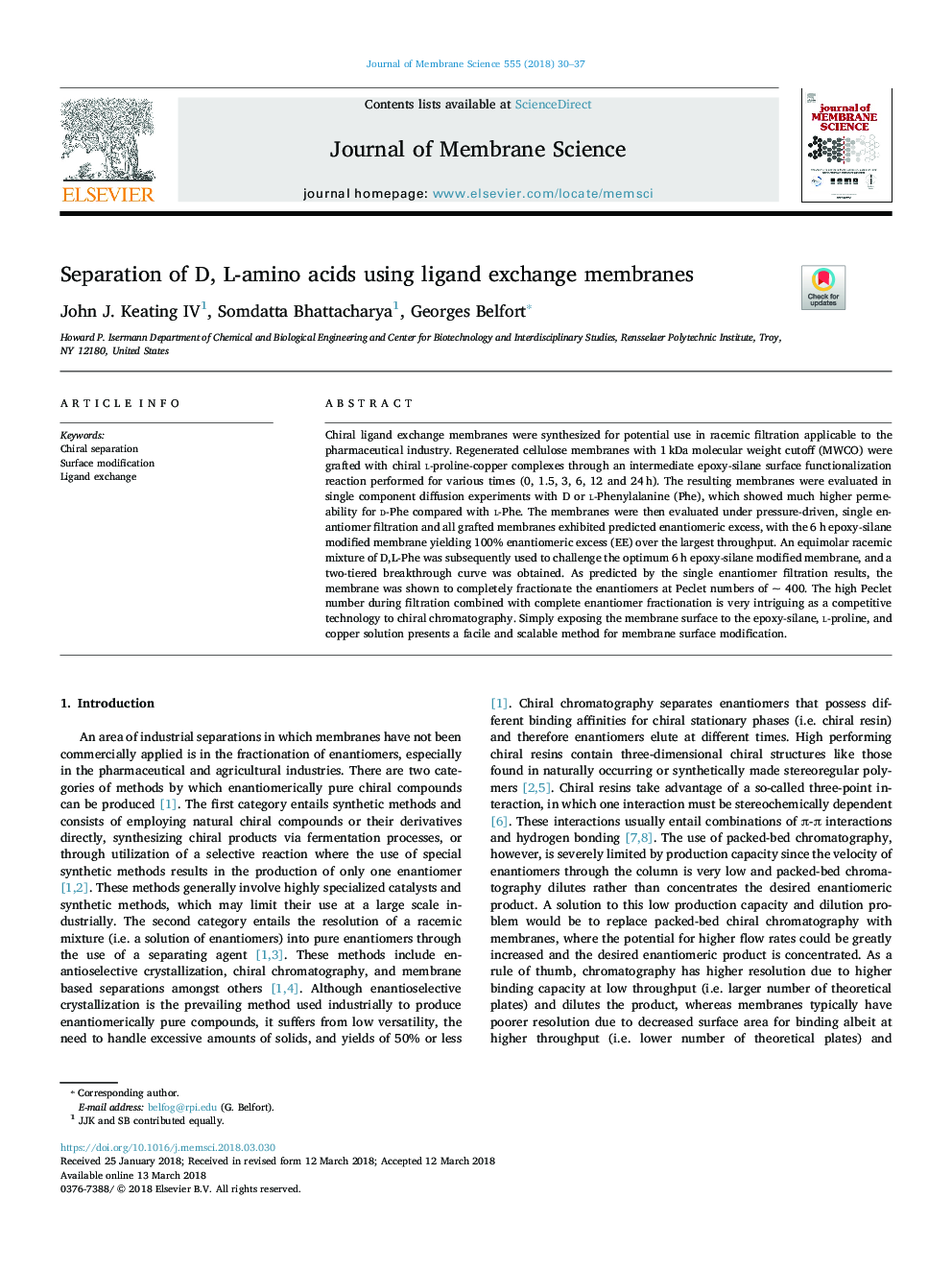| Article ID | Journal | Published Year | Pages | File Type |
|---|---|---|---|---|
| 7019896 | Journal of Membrane Science | 2018 | 8 Pages |
Abstract
Chiral ligand exchange membranes were synthesized for potential use in racemic filtration applicable to the pharmaceutical industry. Regenerated cellulose membranes with 1â¯kDa molecular weight cutoff (MWCO) were grafted with chiral L-proline-copper complexes through an intermediate epoxy-silane surface functionalization reaction performed for various times (0, 1.5, 3, 6, 12 and 24â¯h). The resulting membranes were evaluated in single component diffusion experiments with D or L-Phenylalanine (Phe), which showed much higher permeability for D-Phe compared with L-Phe. The membranes were then evaluated under pressure-driven, single enantiomer filtration and all grafted membranes exhibited predicted enantiomeric excess, with the 6â¯h epoxy-silane modified membrane yielding 100% enantiomeric excess (EE) over the largest throughput. An equimolar racemic mixture of D,L-Phe was subsequently used to challenge the optimum 6â¯h epoxy-silane modified membrane, and a two-tiered breakthrough curve was obtained. As predicted by the single enantiomer filtration results, the membrane was shown to completely fractionate the enantiomers at Peclet numbers of ~ 400. The high Peclet number during filtration combined with complete enantiomer fractionation is very intriguing as a competitive technology to chiral chromatography. Simply exposing the membrane surface to the epoxy-silane, L-proline, and copper solution presents a facile and scalable method for membrane surface modification.
Related Topics
Physical Sciences and Engineering
Chemical Engineering
Filtration and Separation
Authors
John J. IV, Somdatta Bhattacharya, Georges Belfort,
